Strategic Plan 2022-25
Environmental Standards Scotland – Approved Strategic Plan – 20221201.pdf
Download pdf (4.33 MB)
This document may not be fully accessible.
Environmental Standards Scotland (ESS) is an independent body set up to ensure the effectiveness of environmental law, and prevent enforcement gaps arising from the UK leaving the European Union.
More about usOur aim is to publish as much information as we can about the work that we do.
In this section you will find various publications relating to our corporate governance, investigations and analytical work.
You will also find all minutes from our Board and Audit and Risk Committee meetings.
Our workOne of the ways in which we carry out our function is to investigate environmental concerns made to us.
In this section, find out what we can investigate, how to raise a concern and what cases we are currently working on.
Raise a concernKeep up to date with all the latest news about Environmental Standards Scotland (ESS) including latest publications, latest videos, blogs, investigation launches, calls for evidence and related information.
NewsEnvironmental Standards Scotland – Approved Strategic Plan – 20221201.pdf
Download pdf (4.33 MB)
This document may not be fully accessible.

Jim Martin Chair, ESS
I am delighted to publish Environmental Standards Scotland’s, first, Strategic Plan. This Plan, now approved by the Scottish Parliament, sets out how ESS will work to deliver the role and functions given to us by the Continuity Act – to scrutinise, investigate and then secure compliance with, and improvements to the effectiveness of, Scotland’s environmental laws – and in doing so deliver for Scotland’s Environment and its people.
In our interim strategic plan, I committed to ESS consulting widely to develop our approach. I would like to thank all those who engaged with us to progress the plan to where it is today.
It was heartening to see such a positive response to the consultation on the proposed Strategic Plan and such helpful and insightful suggestions on the detail, from a wide range of organisations and individuals.
In Scotland, we have a high level of ambition for our environment. Only by working together can we achieve the best environmental outcomes, for both nature and people. Collaboration will be
key, and I am committed to ensuring that ESS works collaboratively, openly and transparently in carrying out its functions. These are embedded in our principles and values that are set out in the Strategic Plan.
Since we vested on 1 October 2021, ESS has had a rich opportunity to meet, build relationships, and work with a wide range of organisations and individuals in Scotland, across the UK and internationally. This has given ESS a valuable insight into areas of concern, the scale of our task and the challenges to come, as well as supporting our work to refine our proposed approach and to undertake our first investigations.
There has never been a more crucial time to act for our environment and there is, rightly so, a substantial and increasing interest in the work of ESS. Alongside our plan, work is underway
to finalise a communications strategy and to update our website, where we will share progress, and highlight how people can raise concerns with ESS and support our work.
I thank the Scottish Parliament for their consideration of the Plan and look forward to working with them as ESS continues to grow, develop and deliver over the next three years of our first Strategic Plan.

Photo: Alan Morris/Shutterstock.com
1.1
Environmental Standards Scotland (ESS) is an independent body set up to ensure compliance with, and to improve the effectiveness of, environmental law, and to prevent enforcement gaps arising in Scotland following the UK’s departure from the European Union.
1.2
The establishment of ESS comes at a crucial time. Globally we are facing significant environmental challenges: the Intergovernmental Panel on Climate Change has made clear the threat the climate emergency poses to people and planetary health and the need to take urgent action to protect our planet. In Scotland, the Scottish Government has declared twin crises of climate change and biodiversity loss.
1.3
Scotland is already experiencing the effects of climate change, such as increased temperatures and rainfall, with warmer, drier summers and wetter, milder winters. Climate projections for the next century indicate that these trends will not only continue, but intensify – bringing widespread impacts on the environment, society and the economy through increased flood risk, coastal change, and damage to buildings and infrastructure, amongst others.
1.4
Analysis has also shown that the abundance and distribution of Scotland’s species have declined significantly in recent decades, and continue to decline.
1.5
The environment can have a significant impact on human health and there is growing recognition and acceptance that the right to a healthy environment is fundamental to human wellbeing and should be enshrined in law.
1.6
The feedback that we have received as part of the consultation on our draft Strategic Plan makes it clear that people believe we can play an important role in meeting these challenges. We will identify areas where environmental law is not being complied with or is ineffective and will work with Government, public authorities and others to identify solutions and secure timely and practicable improvements.

Photo: iStock.com/Lisa5201
1.7
We recognise that we will need to work collaboratively with a wide range of partners to achieve our objectives, and to establish a reputation as an independent, fair and strong champion for environmental protection.
1.8
We are clear that the environmental challenges facing us are urgent and serious and we are ready to play our role in upholding and improving environmental laws and standards for the benefit of nature, people, society and the economy.

Photo: Viacheslav Lopatin/Shutterstock.com
2.1
ESS is an independent public body, created by the UK Withdrawal from the European Union (Continuity) (Scotland) Act 2021 (“the Continuity Act”). We are a non-ministerial office, independent of the Scottish Government, and accountable to the Scottish Parliament.
2.2
We are led by a Chair and Board, who have significant experience in leading independent scrutiny organisations and expertise in environmental law, policy and regulation. We are headed by a
Chief Executive and are organised into three specialist teams, with a main office in Edinburgh.
2.3
ESS’ functions are set out in the Continuity Act, and include: monitoring and investigating public authorities’ compliance with environmental law, the effectiveness of the law and how it is implemented and applied in Scotland.
2.4
The Act also sets out steps that we can take to secure public authorities’ compliance with environmental law, and improvements in the effectiveness of the law or in how it is implemented or applied. This means that ESS can and will aim to identify areas where environmental legislation is inadequate or could be improved.
2.5
Our remit covers all Scottish public authorities, including: local authorities; health and transport authorities; the Scottish Government and its agencies; as well as organisations carrying out functions of a public nature.
2.6
Whilst our remit is focused on Scotland, we recognise that the environment doesn’t acknowledge administrative boundaries. So we will work closely with our counterparts in the UK (including the Office for Environmental Protection in England and Northern Ireland, and the Interim Environmental Protection Assessor in Wales), to support environmental protection and enhancement across the UK and to ensure that Scotland keeps pace with developments in environmental law and policy, in Europe and elsewhere, and as required by the Act.
2.7
As an oversight body we have powers to scrutinise the actions of public authorities on all aspects of environmental law. However, we are not regulators and cannot, for example, consider applications for consents, permissions or provide licences. We are also not an appeals or complaints body, so cannot reconsider decision making on individual decisions or applications.
2.8
In undertaking our work we can consider and investigate matters of concern identified through both our own monitoring and analysis, and in response to concerns raised by others, known as representations. Examples of both of these routes are provided in this Plan – our investigation into Air Quality was prompted by our own monitoring, (page 29) whilst our work on Acoustic
Deterrent Devices was in response to a representation (page 18).
2.9
When we identify shortcomings, we will try to resolve matters informally with public authorities, wherever possible. Public authorities have a duty to cooperate with and assist us, and try to swiftly resolve any matters that we raise with them.
2.10
We have a range of statutory powers to help secure compliance or improvements in effectiveness, including:
2.11
Section 4 provides further detail on our approach to utilising our formal powers.
3.1
Our Strategic Plan is a statement about how we as an organisation intend to work to deliver our functions. We are ambitious for Scotland’s environment and our Vision is that:
‘Scotland’s people and nature benefit from a high quality environment and are protected from harm through the consistent application of effective environmental laws, which are recognised internationally as setting high standards.’
3.2
Our Mission Statement is that:
‘We will ensure that Scotland’s environmental laws and standards are complied with, and their effectiveness improved to achieve Scotland’s ambitious targets for the environment, nature and climate change.’
 3.3
3.3
Our work will be informed by our Values and Principles, which will guide all that we do.
3.4
The Values set out in Figure 1, embody the organisation that we strive to be, how we want to be viewed by our stakeholders, and how those who work for us feel.
3.5
The Principles set out in Figure 2 will inform how we approach our work.
| We are | Our staff feel |
|---|---|
| Independent | Respected |
| Transparent | Included |
| Trusted | Innovative |
| Effective | Collaborative |
Figure 1. Values
3.6
Our Principles are distinct from the ‘guiding principles on the environment’ which Ministers and public authorities must have due regard to. As a public body, ESS will have regard to the guiding principles on the environment and will also have a role in scrutinising whether public authorities are complying with this duty.
Figure 2. ESS Principles
3.7
The following strategic outcomes set out the intended results of our work throughout the lifetime of this Plan, and will help guide the action we take to achieve our vision, and deliver our mission statement;
| Our Vision & Mission Statement | ||||||
|---|---|---|---|---|---|---|
| Strategic Outcomes | ||||||
|
||||||
| Our Values & Principles | ||||||
Figure 3. Sets out the building blocks of our Strategic Plan. The strategic outcomes will support the achievement of our Mission Statement and Vision. These are all underpinned by our Values and Principles
3.8
These strategic outcomes are mutually supporting and only by developing each aspect of our role will we be able to fulfil our remit effectively.
3.9
The following sections of the plan summarise our approach to delivering each of our strategic outcomes;
3.10
Words highlighted in bold throughout the Plan are defined in the glossary at the end of this document. Further detail on all aspects of our work and our approach will also be made available on our website.
We have taken effective action to ensure public authorities’ compliance with environmental law and to improve effectiveness of the law.
- We will target our efforts and resources where we can add most value – focusing where our contribution is needed most or will make most difference
- We will seek to resolve issues through agreement wherever possible – having recourse to our formal powers where we judge it is necessary to deliver the outcome expected
4.1
The Continuity Act provides us with a range of powers to secure compliance with the law and to bring about improvements to the effectiveness of environmental law and how it is implemented.
4.2
The Continuity Act also makes clear that we and public authorities are expected to work together to swiftly resolve concerns about compliance and effectiveness, and to agree any remedial action needed to protect the environment.
4.3
We will always seek to work constructively with public authorities where possible to reach informal resolution and we will actively consider this option at all stages of an issue. Agreeing effective remedial action in this way will often be a more expedient and efficient way of securing favourable outcomes.
4.4
Prior to an investigation, when considering matters of concern, we may undertake ‘pre-investigation’ enquiries (for example, to ascertain whether the concerns are justified and to consider whether informal resolution is appropriate). Public authorities are duty-bound to assist us and we will let them know the nature and purpose of our enquiries through early and regular engagement.

Scientist Ecologist Taking a Water Sample in the Forest
4.5
There are a range of circumstances where we might consider it appropriate to undertake informal resolution with a public authority. These include where we consider there to be evidence of failing to comply with environmental law, its implementation or the effectiveness of environmental law and its application. We will liaise with the public authority concerned explaining the reasons for our view. We will either invite representatives of the public authority to discuss and agree, within a reasonable timescale, suitable compliance measures and/or improvement measures, or, where there is a justification, we will set out in advance any measures that we consider are required to resolve the failure.
4.6
Whilst we may have a view on how things need to change, there may be a number of ways to resolve an issue successfully. Where a public authority suggests an alternative approach, we will assess whether we consider the approach is satisfactory, seeking independent expert advice if required.
4.7
Where informal resolution is reached, we will agree with the public authority a reasonable timescale for the measures to be implemented and explain the evidence required to confirm compliance. We will record and publish the measures agreed and will monitor their implementation, for future reporting and analysis. We recently concluded our first example of informal resolution (on the regulation of acoustic deterrent devices by fish farms), as summarised below. Full details of all cases are available on our website.
Acoustic Deterrent Devices (ADDs) have been used in the aquaculture industry to prevent seal attacks at fish farms. These devices have the potential to disturb European Protected Species such as dolphins and porpoises, which are protected under the Conservation (Natural Habitats, &c.) Regulations 1994 (“the 1994 Regulations”). Their deployment must comply with the Aquaculture Code of Practice: Containment of and Prevention of Escape of Fish on Fish Farms in relation to Marine Mammal Interactions, which came into force in November 2021. Under these regulations, an ADD which disturbs protected species can only be used if the operator has obtained a licence or provided sufficient evidence to demonstrate that the planned use will not harm marine mammals.
ESS received a representation regarding Marine Scotland’s duties to ensure that the aquaculture industry complies with the 1994 Regulations. The representation expressed concerns that some fin-fish farm operators may have used ADDs without a licence, and queried the sufficiency of Marine Scotland’s investigation and enforcement actions.
In our preliminary review of the representation, we engaged positively and constructively with Marine Scotland, seeking information from them to understand better the plans in place to ensure compliance with the 1994 Regulations and the Code of Practice, as no fish farm operators have been licensed to date for ADD use. We also sought information in respect of Marine Scotland’s enforcement processes.
As a result of our engagement, Marine Scotland has agreed to make changes to their enforcement procedures and to provide public updates on enforcement works. Full details of the outcome of this representation have been published on our website.

Figure 4. Illustrates the process described above, that we will follow to verify concerns, to investigate and to secure improvements.
4.8
Where it is not possible to resolve a matter by informal resolution in a reasonable timescale, we will use our statutory powers to prevent further harm or to reduce the risks to the environment or public health, and to ensure the necessary action is taken to put matters right. How we will use these powers is detailed in the following paragraphs.
4.9
We will issue a compliance notice where we consider that:
4.10
When issuing compliance notices, we will be clear on the environmental law in question, the regulatory function to which noncompliance relates and provide full reasons for why we consider that non-compliance has occurred, including the actual or potential environmental harm involved. We will also set out what action needs to be taken by the public authority to achieve compliance, and the timescale within which this should occur. Subsequently, we will ensure that the steps required are implemented and fully evidenced.
4.11
A public authority issued with a compliance notice can appeal to the Sheriff within 21 days of the notice being issued.
4.12
If a public authority fails to comply with a compliance notice, without a reasonable excuse, we can then report the matter to the Court of Session.
4.13
We will report publicly on the cases where we have issued compliance notices, including the remedial action taken by the public authority.
4.14
We may not utilise compliance notices where the lack of compliance represents a systemic failure or is likely to be repeated by other authorities in similar circumstances – instead we would consider preparing an improvement report.
4.15
We will prepare an improvement report where we consider that:
 4.16
4.16
We will prepare improvement reports where we consider that a compliance notice will not resolve the issue. This could be where the function being exercised by the public authority is not covered by a compliance notice (e.g. a non-regulatory function such as reporting), or where we find that the problem goes beyond the actions of a single public authority, and reflects a pattern of conduct across multiple public authorities which points towards a structural flaw in the system (what we describe as a ‘systemic failure’). It could also be where there is a need to review and amend the relevant legislation itself and we will consider the impact of cumulative and in-combination impacts and their contribution to systemic failure.
4.17
When preparing improvement reports, we will provide full reasons for why we believe that the public authority(s) has failed to either: comply with environmental law; make effective environmental law; or implement or apply environmental law effectively. We will also set out the impact of the failure and the timescale by which we consider that the necessary action should be taken.
4.18
We will provide a copy of the improvement report to Scottish Ministers and the Scottish Parliament and will publish it on our website. The Scottish Government is then required to produce an improvement plan and submit it to the Scottish Parliament for approval.
4.19
Judicial review is the process by which a court reviews a decision, act, or failure to act by a public body or other official decision maker. Alongside, and notwithstanding, our powers to issue a compliance notice or improvement report, we have the power to make an application for judicial review, or to apply to become a party to a judicial review taken by another party, in relation to a public authority’s conduct in the following circumstances:
4.20
Before taking this action we must be satisfied that both the failure of the public authority to comply is serious, and that the application for judicial review is necessary to prevent or mitigate serious environmental harm. We will also consider the urgency with which we need to act.
4.21
In determining whether any environmental harm that has been caused is serious or whether there is a risk of serious environmental harm which requires to be prevented, the factors which we believe appropriate to consider include:
4.22
In determining whether the failure to comply is serious, factors which we believe appropriate to consider include:
We have prioritised and investigated the most important matters of concern and identified the action needed to rectify problems and improve compliance and effectiveness.
1. We will target our efforts and resources where we can add most value – focusing where our contribution is needed most or will make most difference
3. We will be evidence driven – seeking a wide range of inputs and expertise to inform our work and to support our decisions and advice
5.1
When matters of concern are brought to our attention, we will undertake a preliminary review to gather the information we need to determine whether they are within our investigatory remit. We may become aware of matters of concern through either a representation or through our own monitoring and analysis.
5.2
Representations made to us may trigger an immediate investigation because of the significance or urgency of the matter of concern. In deciding whether to immediately investigate, ESS will take into account the following factors:
 5.3
5.3
We anticipate that, more commonly, evidence from representations and other indications of public concern will be combined with findings from our monitoring and evaluation work to identify matters of concern that are appropriate for investigation. In prioritising this work, ESS will take into account the following factors:
5.4
Where we decide that a matter of concern is not a priority for investigation, we may continue to monitor the issue and gather or assess data and evidence about compliance and effectiveness, so that we can reconsider our decision at a later date. Any parties who have been involved in our consideration of a matter (including public authorities, NGOs, technical experts or members of the public) will be updated regularly during this process in line with our published service standards.
5.5
We engage regularly with public authorities on a range of topics and issues. Where we decide to investigate a matter of concern, we will notify the public authorities and relevant parties of our decision. The public authorities will then have an opportunity to respond, explain their approach, share any evidence and seek any clarification from us.
5.6
For each investigation, we will publish the broad issues we expect to investigate and the relevant timescales on our website. By making this publicly available, any interested parties can be aware of the issues we propose to investigate and engage with us or contribute, by providing evidence, examples or case studies. We will also regularly publish details of our pre-investigation work on our website, as well as details of all representations made to us and how they have been considered.
5.7
During our investigation, we will gather information from the public authority(s) concerned through the issuing of Information Notices. This is important as it allows us to enforce our requests for information through the courts should a public authority fail to provide information. It also enables us to set out the timescales by which the required information is to be received. We will always engage with public authorities informally before issuing an information notice. This will provide public authorities with an early opportunity to highlight any potential issues they anticipate with providing specific information to us.
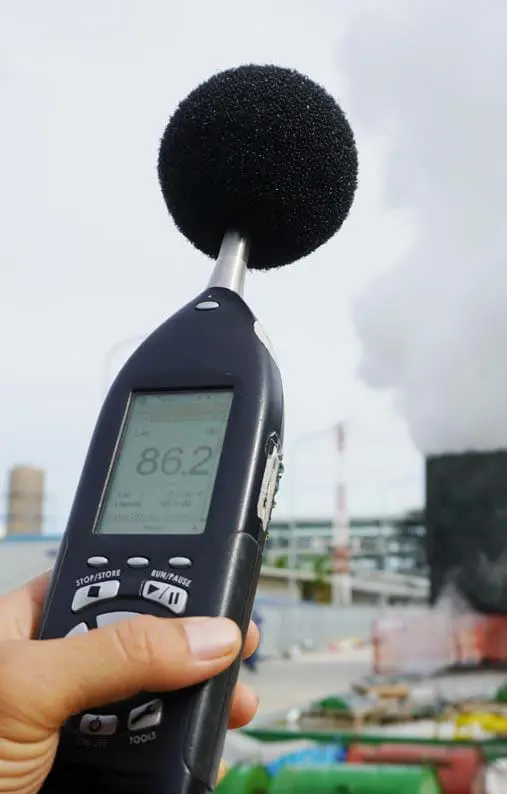 5.8
5.8
When using Information Notices, ESS will tell the public authority which information is to be provided, the purpose for which it is required and the timescale within which the information is required. For example, we may ask for any applicable policies or procedures connected to the matter under investigation, or information that will enable us to understand the decision-making process and course of events relevant to the investigation.
5.9
We may seek advice from independent specialists or technical experts in particular fields to help us understand/interpret complex or technical issues or evidence relating to decisions and actions. This will help us reach an informed opinion on whether the law has been complied with, and/or whether it is being applied effectively. Legal advice may also be required at various stages of our investigation process. For example, to help assess whether an issue falls under ESS’ remit, or to understand the legal responsibilities of a particular public authority.
5.10
We will work quickly and efficiently throughout our investigations and provide relevant parties with updates and an estimate of the completion date of each investigation as soon as we can.
5.11
Once we have concluded our investigation, we will issue draft reports to relevant parties setting out our provisional findings. The public authority will have the opportunity to comment on our proposed conclusions, including any actions that are considered necessary to rectify the situation and/or to prevent failures from happening again in future.
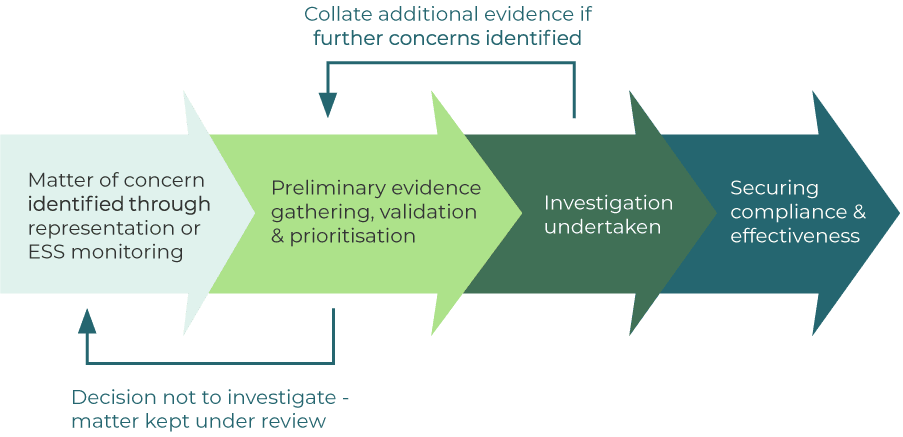
Figure 5. Describes the process by which we will gather evidence, and prioritise and carry out investigations
5.12
At this stage we will discuss with the public authority whether they are able to commit to action(s) that would enable us to resolve the matter informally within a reasonable timescale, or whether formal enforcement action is necessary.
5.13
We will then finalise and issue a report setting out the findings of our investigation. This process is summarised in figure 5.
5.14
Although the Continuity Act restricts us from disclosing certain types of information, when exercising our functions, we will work openly and transparently throughout all stages of the investigation process and adhere to the principle of procedural fairness. Details of all active and completed investigations will be published on our website.
Air pollution (including the pollutant nitrogen dioxide – NO2) is widely recognised as causing significant health effects and is estimated to contribute towards over 2000 premature deaths per year in Scotland.
Countries across Europe, including the UK, have passed legislation to achieve ‘limit values’ as required by the Cleaner Air for Europe Directive 2008/50/EC. Meeting air quality limit values in respect of nitrogen dioxide is a legal requirement and governments must have in place adequate action plans to achieve the set limit values within the ‘shortest time possible’.
In March 2021 the European Court of Justice (ECJ) delivered its judgment that, across the UK, exceedances of statutory air quality limit values in respect of NO2 had remained ‘systematic and persistent’ for at least seven years (2010-2017).
In view of the serious, longstanding and intractable nature of the failure to meet limit values, and ongoing concerns about whether air quality limit values for NO2 would be met going into the future, we decided to launch an investigation into the arrangements put in place by the Scottish Government to deliver compliance with statutory air quality limit values in respect of NO2.
We sought information from a number of local authorities and the Scottish Government to inform our investigation. We found a number of areas where the system of local management of air quality could be improved. We also found that governance and oversight arrangements are overly complex and opaque. In view of this, we issued an improvement report to Scottish Ministers recommending measures that should be taken to strengthen the effectiveness of the law underpinning the systems in place to improve air quality. The Scottish Government must now prepare and seek Parliamentary approval for an improvement plan – setting out how they intend to respond to our recommendations.
We have built knowledge on environmental performance, are well informed about developments in EU and international standards and practice, and have formed effective partnerships with bodies
collecting, collating and scrutinising environmental data.
3. We will be evidence driven – seeking a wide range of inputs and expertise to inform our work and to support our decisions and advice
5.We will seek opportunities to work in partnership with others – working closely with all relevant stakeholders to ensure that our collective efforts deliver benefits for environmental protection and enhancement
6.1
The Continuity Act sets out that, amongst other things, in undertaking our functions ESS may consider, assess and review data on the quality of the environment in Scotland, keep under review implementation of any international obligation of the UK relating to environmental protection and have regard to developments in international environmental protection legislation.
6.2
In particular, we will also consider whether – as Scottish Ministers made a commitment to do during the passage of the Continuity Act through Parliament – Scotland is ‘keeping pace’ with environmental standards in the European Union.
6.3
Our investigations may be triggered by either a representation made to us (as detailed in Chapters 5 and 7), or through our own monitoring and analysis work highlighting an issue of concern. ESS will therefore develop a robust system for monitoring environmental performance in Scotland and how this is changing, to identify instances of non-compliance or ineffectiveness of environmental law.
6.4
Our monitoring and analysis work will involve assessing a wide range of data, progress reports and research findings to glean insights into where environmental regulation is working well, and where it is not. We will primarily bring together and synthesise evidence from existing sources to identify where further analysis or investigation is most needed, but may occasionally commission new primary research or data gathering.
Prioritisation Criteria
6.5
To prioritise our work, we will collate, synthesise and assess the evidence about potential matters of concern (including matters of public concern) against a range of criteria, including:
6.6
We will cast our net widely, identifying and interrogating data, reports, submissions and intelligence from partners and stakeholders that can help us identify instances of non-compliance or ineffective implementation of the law. We will work with the equivalent scrutiny bodies across the UK and other partners to identify and access the data and information that we need.
6.7
If we identify a significant gap in the evidence base that affects our ability to scrutinise compliance and effectiveness, we will work with other organisations to secure further data or research to address this. This may involve working with partners in government and public authorities, research institutes and universities, or other scrutiny and advisory bodies. In addition, we may occasionally issue calls for evidence to help supplement our own findings.
6.8
Our analysis will be robust, reliable and objective and we will quality assure the evidence we use considering: the timeliness and suitability of the information; the methodology applied for data collection and analysis; comparability; accuracy; and reliability.
6.9
Our quality assurance process will be proportionate and will consider the robustness of the evidence and any uncertainties. Any analysis we undertake will set out clearly the results of our quality assurance process, the strength of the evidence base and any caveats or limitations that apply.
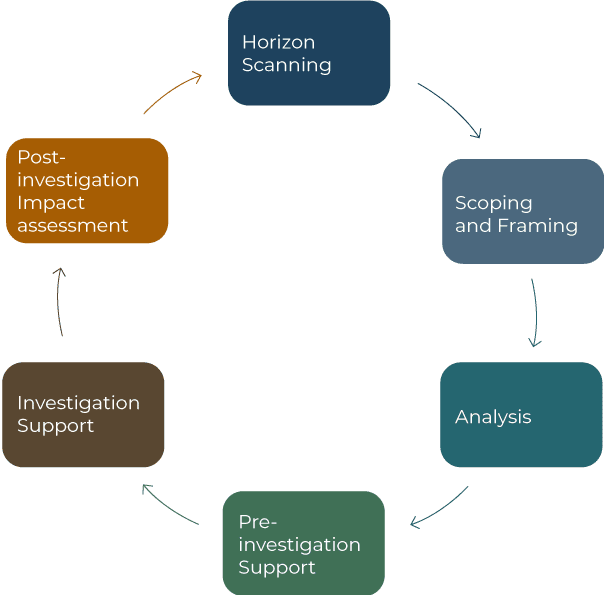
Figure 6. Monitoring and Analysis stages
6.10
Our monitoring and analysis work will progress through a series of stages, from horizon scanning to identify high-level areas of concern, through a deepening analysis and understanding of how things are changing in that area, the causes of this, and how policy and regulatory decisions affect this (see figure 6). We will focus on identifying areas where further investigation may be necessary, then supporting active investigations, and assessing whether the changes that have been made in response to our recommendations are having the desired impact on environmental performance.
6.11
We have identified eight environmental topic areas to capture the matters of concern that have been raised with us and where we have undertaken investigation or analysis.
Figure 7 provides a visual representation of our categorisation, which is based upon those used in the Strategic Environmental Assessment and the Environmental Impact Assessment processes.
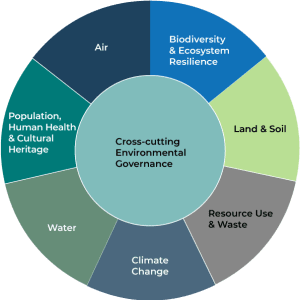
Figure 7. Environmental Topic Areas
6.12
The balance of work in each of these topic areas will naturally vary from year to year as we identify, or concerns are raised about, particular issues. Using these topic areas as a guide will help us identify where concerns are focused and where we have undertaken follow-up work, and will help ensure that we do not inadvertently neglect one particular area. We recognise these topics will have interlinkages and dependencies and there is potential for positive and negative feedback across the areas.
6.13
Our work to date has been focused on the early stages of our analytical process, scanning across all topic areas, identifying the key data sources, summarising what they tell us about how the environment is changing in Scotland, and whether Scotland is on track to achieve its environmental targets and objectives. A series of Baseline Evidence Reviews summarising our findings for each of the eight topic areas are available on our website.
6.14
We will continue to monitor environmental performance more widely to assess whether any other matters of concern should be prioritised. We will also undertake horizon scanning to identify emerging matters of concern and relevant improvements in environmental law elsewhere. This will inform a regular review of our priorities and how we deploy our resources.
6.15
Our baseline review work and the prioritisation criteria discussed in paragraph 6.5, has led us to identify the following issues as priorities where we propose to focus analytical work during the next three years:
6.16
As set out in Chapter 7, we will engage with environmental organisations, research institutes, universities, EU and international bodies, professional bodies and public authorities on where we intend to focus our analysis and will publish more information about our work on our website. We will also publish further details of how evidence providers can feed in their own intelligence and insights, to help us to monitor progress and to develop our understanding of these, and other, issues.
Our role is widely understood and individuals, groups and organisations are confident raising concerns with us. We are regularly engaged in work to improve compliance, the effectiveness of environmental law and how it is applied.
4. We will be open and transparent – keeping people informed about the progress of our work and providing opportunities to input to and influence it
5. We will seek opportunities to work in partnership with others – working closely with all relevant stakeholders to ensure that our collective efforts deliver benefits for environmental protection and enhancement
7.1
In order to support people to confidently raise concerns with us, we will promote our work widely and openly to raise awareness and understanding of our role. In addition, we will engage proactively to ensure that we are well informed about concerns around compliance and the effectiveness of environmental law. As part of this work we will participate in discussions about forthcoming changes and reform in Scotland, the UK and internationally.
7.2
As an independent, Non-Ministerial Office we are responsible to the Scottish Parliament and will continue to develop our relationship with its committees and members. We will report annually to the Parliament on our activities and will liaise with relevant committees to provide updates on our work and avoid unintentional overlap in our work programmes. We will ensure that the Parliament is informed when we conclude investigations, achieve resolution or publish monitoring reports, and will also respond to requests from the Parliament for input to its work when asked.
 7.3
7.3
We will liaise with other oversight and scrutiny bodies to ensure that we add value and avoid unnecessary overlap in our functions. We have already established positive working relationships with our counterpart organisations in the UK; the Office for Environmental Protection in England and Northern Ireland, and the Interim Environmental Protection Assessor in Wales.
7.4
To support evidence exchange and collaboration we are also developing our relationships with advisory and expert bodies, including the Climate Change Committee and the Joint Nature Conservation Committee.
7.5
We will publish all our memoranda of understanding (MOUs) with relevant bodies and committees on our website, setting out our mutual expectations and future liaison and cooperation arrangements.
7.6
We are establishing liaison and signposting arrangements with a range of advisory, oversight and scrutiny bodies. This is to ensure that, when we are not the appropriate body to take action on their concerns, we are able to direct people to the appropriate source of redress, advice or support.
7.7
Given the need for us to keep abreast of relevant changes in environmental regulation in Europe and beyond, we will continue to develop our relationships with the institutions and bodies of the European Union and other international bodies, and to participate in relevant forums and knowledge exchange events.
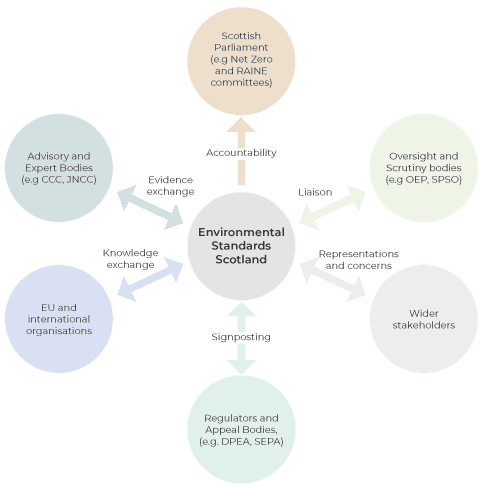
Figure 8. Shows a summary of the range of stakeholders and types of relationships we have with them.
7.8
We are open to anyone (individuals, community groups, environmental groups, businesses, land managers or public authorities) raising a concern with us (known as making a representation) about compliance with, or the effectiveness of,
environmental law in Scotland.
To help us target our efforts and prioritise our resources effectively and efficiently we ask anyone wishing to raise a concern with us to complete a simple form, setting out certain details and facts about the issue that they want to make a representation about.
This is standard practice for oversight and regulatory bodies and mirrors the approach taken by the European Commission. We are determined that no one should be disadvantaged because of this requirement and we will provide individual
advice and support to those who need help setting out their concerns. A step-by-step video explaining how to submit a representation is available on our website. This approach has been welcomed by those raising concerns and helps ensure that their representation is within our remit and clearly focused.
In some cases another scrutiny or oversight body will be better placed to consider the matter of concern and when this is the case we will discuss with the person, group or organisation making the representation about how best to signpost or refer them to an alternative source of advice or resolution.
Because of the nature of our role, people may also wish to raise concerns with us in a whistleblowing capacity about the organisation that they work for. ESS is in the process of being added to the list of prescribed persons under the Public Interest Disclosure Act 1998, which ensures that anyone raising a concern, which meets certain criteria, may benefit from protections afforded to them under the 1998 Act. This will ensure that whistleblowers can raise concerns with us without fear of negative treatment from their employer as a result.
We will keep those who have made representations to us informed about our consideration and investigation of their matter of concern. We will always aim to be as open and transparent as possible with all relevant parties about progress,
within the limits placed on us under the Continuity Act and other legislation (including Freedom of Information laws, the Environmental Information Regulations and the General Data Protection Regulation).
7.9
We will regularly publish information on our live investigations, pre-investigation casework and frequently asked questions on our website. In time we will report publicly on the conclusions and outcomes of our work in the same way, as set out in Chapter 5 of this Plan.
7.10
We will be transparent, by publishing our Business Plan each year, setting out the key priorities and outputs to be delivered in the next 12 months, alongside our general performance and progress. In line with public body requirements, we will meet our corporate reporting responsibilities, including reporting annually to the Scottish Parliament.
7.11
We will continue to develop our communication with stakeholders in the public, private and voluntary sectors, and develop our Communications Strategy to broaden our reach – in particular to marginalised or disadvantaged communities and groups, to ensure they are aware of our role and how to raise concerns.
7.12
We will regularly share information through our communications platforms, including the ESS website, Twitter and LinkedIn social media channels. We will finalise our Communications Strategy and publish this alongside our approved Strategic Plan, enabling all those with an interest in our work to understand our approach and how we intend to promote our role.
We are an effective and efficient organisation.
1. We will target our efforts and resources where we can add most value – focusing where our contribution is needed most or will make most difference
5. We will seek opportunities to work in partnership with others – working closely with all relevant stakeholders to ensure that our collective efforts deliver benefits for environmental protection and enhancement

People sunbathing in the Park
8.1
We will ensure our plans and operational activity are regularly reviewed and accountable. Our Board meets regularly and the minutes of its meetings are available on our website, as are the minutes of the Audit and Risk Committee. Our Business Plan is regularly reviewed and made publicly available, alongside other key documents such as our Framework Document setting out how we will work with the Scottish Government and our Standing Orders. We will continue to be transparent in this way and will share all updates and changes as the organisation develops.
8.2
We are accountable to the Scottish Parliament and have a legal duty to report on our activities each year. The first formal report to Parliament has been published and is available on our website. All future annual reports will be made available on the website as soon as practically possible following the end of each financial year.
8.3
As a public body, we operate in line with the Public Finance and Accountability (Scotland) Act 2000 and have a duty to produce annual accounts in line with the Government Financial Reporting Manual. The first set of accounts will be produced for the 18-month period, from October 2021 to March 2023. We will assess the process of establishing ESS and our key procedures and processes with support from our internal auditors. We anticipate the appointment of our external auditors during autumn 2022.
8.4
We have established a well managed organisation with secure finances and corporate functions. The budget allocation for ESS in the financial year 2022/23 was £2,192,000, as detailed in the 2021/22 annual report. We will publish detailed summaries and projections of expenditure and progress in all our annual reports each financial year.
8.5
We will continue to maintain a clear approach to how we allocate and prioritise our spending to ensure best value. In order to operate efficiently within this budget, we have secured cost effective arrangements for our corporate services. We have put in place shared services and contracts for the services needed to operate as an independent body, including human resources, IT, financial systems, procurement, communications, legal support and audit provisions. These provisions will be regularly reviewed by the ESS Board and Audit and Risk Committee, to ensure efficient and effective use of resources.
8.6
We have attracted a team of highly skilled and motivated staff. At the time of publication in 2022/23, an initial staff team of 16 (including the new permanent Chief Executive Officer) is in place. We are still developing as an organisation. We will continually assess ESS’ staffing complement necessary to ensure we can perform our functions effectively. We will seek to ensure that we maintain flexibility so that we can respond effectively to future demands. Further details will be available in our annual reports.
8.7
Our staff team is drawn from local authority areas across Scotland and our Board and Committee members live locally, nationally and internationally. All our team work through hybrid working arrangements linked to our base at Thistle House in central Edinburgh. The team structure includes a Chief Executive Officer and three senior heads of functions, each leading one of the three main areas of ESS’ operation. The structure showing the senior roles is set out in Figure 9 below:
8.8
To retain our reach, and ensure our organisational wellbeing and effective ongoing development, we have contracted a range of independent human resources related support. With this in place, we will prioritise the development of our team by implementing our Learning and Development programme, pulse surveys and events, to build our organisational culture, with a particular focus on equalities and wellbeing.
8.9
We will publish our Diversity and Equalities policy, setting out our approach to how we will ensure that diversity and equality is at the heart of ESS, from our recruitment, to developing our staff, and in how we undertake our day-to day business.
8.10
We have established our core internal communications policy and will continue to create an inclusive culture where team members are consulted and involved in the development of key policy areas, and information is readily shared and available through our internal communication platforms.
| CEO | ||
|---|---|---|
| Head of Investigations, Standards and Compliance | Head of Corporate Services and Communications | Head of Strategy and Analysis |
Figure 9. ESS organisation structure
We are an effective and efficient organisation.
9.1
It is vital that we are effective – and are perceived to be effective – in fulfilling our new scrutiny role. To be able to build trust in the post EU exit system of environmental governance and scrutiny in Scotland we must be able to demonstrate how the action that we are taking is delivering results. What we will do
9.2
Our performance measurement framework will enable us to identify how we are helping to deliver improvements to environmental outcomes in the real world – by improving compliance with and/or the effectiveness of environmental law in Scotland.
9.3
Our approach is founded upon a ‘logic model’ that sets out how the resources that we deploy, and the actions that we take, bring about changes to Scotland’s policy and regulatory environment which, ultimately, leads to improvements to environmental quality and public health. This is illustrated in the following diagram:

Figure 10. Shows a summary of our logic model approach, from actions and outputs, to intermediate outcomes, and improvements to long-term outcomes.
9.4
Two of our key areas of activity are investigating the most important matters of concern (Chapter 5) and building knowledge of environmental performance through monitoring, analysis and evaluation (Chapter 6) – in the logic model these are described as our actions. Through these actions, we will identify the changes needed to rectify problems and improve compliance and effectiveness. As a result, we will be able to instigate change through informal resolution, compliance notices, improvement reports and judicial review (Chapter 4 – our outputs).
 9.5
9.5
When public authorities implement the policy or regulatory changes that are required, this will deliver improvements to compliance with environmental law and the effectiveness of the law (our Mission Statement – and our intermediate outcome). We acknowledge that there are many other factors which contribute to changes to environmental outcomes, and our contribution to improving compliance and effectiveness is only one. Nevertheless, the changes we instigate will, in turn, contribute towards the achievement of Scotland’s ambitions for the environment and climate change (our Vision – and the long-term outcome in our logic model).
9.6
Our outcomes will only be delivered if we are also an efficient and effective organisation, which engages and communicates effectively. These activities underpin the actions, outputs and outcomes in our logic model and we will therefore also collect data against a range of indicators to help monitor our performance in these areas.
Two early examples help to demonstrate how our logic model links the work that we undertake to improvements in the real world.
9.7
To monitor our impact, we will use both quantitative and qualitative measures. We have developed a set of key performance indicators (KPIs) covering each level of our logic model – our activities, outputs and intermediate outcomes, through to the long-term outcome. In addition, we will use other ways to evaluate the impact we are having – for example, monitoring whether the changes made have had the desired effect on the environment, or through case studies and impact assessments of the added-value that our intervention has delivered, and the contribution it has made towards the achievement of long-term outcomes.
9.8
The Annex sets out the indicators which we will report on in our annual reports to Parliament. Alongside the numbers, we will provide commentary on what we believe the indicators tell us about how we are performing, the progress we are making towards our long-term outcomes, and what action we intend to take to improve our performance in the coming year.
9.9
Demonstrating the impact that we have made is not straightforward, as much of our influence on long-term outcomes is indirect. Nevertheless, we believe that this approach – and the indicators that we will report against – will enable us to monitor the efficiency and effectiveness of what we are doing and to demonstrate whether we are on track to achieve our vision.
9.10
Further details of the methodology we will use to track and report against the indicators will be made available on our website. For a small number of indicators, further work is needed to establish a suitable methodology for measuring progress. For example, to develop proposals for how we assess progress against a range of environmental indicators (our long-term outcome indicator). This will be completed and our website updated with full details as soon as possible.

Woman crossing stepping stones on a river
10.1
Following a period of scrutiny, as required by the Continuity Act, this Plan has been approved by the Scottish Parliament and published on our website.
10.2
As an organisation ESS is still growing and developing and we will therefore monitor progress against the Strategic Plan and undertake a review within three years. Thereafter, we will periodically review our Strategic Plan and update it as required.
10.3
More information on the progress of our work as it develops will be available on our website and in our Annual Reports to Parliament.
| Actions → | Outputs → | Intermediate Outcome → | Long-term Outcome |
|---|---|---|---|
| Number of investigations completed | Number of investigations resulting in:
|
Percentage of compliance notices implemented in full, on schedule | ESS’ assessment of Scotland’s progress against environmental indicators |
| Number of analysis projects completed | Percentage of recommendations implemented from improvement reports | ||
| Number of representations considered | Number and proportion of issues resolved informally | Percentage of recommendations/actions implemented in full, on schedule from informal resolution |
| Engaging and Communicating Effectively About Our Role and How to Raise Concerns | An Efficient and Effective Organisation |
|---|---|
| Number attending public/stakeholder engagement sessions | Service standards met |
| Percentage of feedback positive from public/stakeholder engagement sessions | Percentage of corporate reporting requirements delivered to schedule |
| Number of citations in parliamentary reports or meetings | Number of complaints received |
| Number of social media followers | Board and staff diversity information |
| Number of new and return visits to ESS website | Staff engagement |
| Stakeholder perception of ESS role | Organisational carbon emissions (tonnes of CO2 equivalent) |
| Glossary Term | Glossary Term Description |
|---|---|
| Compliance Notice | A notice, which ESS can issue under section 31(1) of the Continuity Act, setting out the steps a public authority must take in order to address its failure to comply with environmental law. |
| Continuity Act | Shorthand for the UK Withdrawal from the European Union (Continuity) (Scotland) Act 2021 – the legislation passed by the Scottish Parliament in 2021 creating ESS and setting out its functions, powers and obligations. |
| Environment | Section 45 of the Continuity Act defines the meaning of ‘the environment’. This means (a) all, or any, of the air, water and land (including the earth’s crust), and ‘air’ includes the air within buildings and the air within other natural or man-made structures above or below ground, and (b) includes wild animal and plant life and the habitats of wild animal and plant life. |
| Environmental Law | Section 44 of the Continuity Act defines the meaning of environmental law in relation to the functions of ESS. Pursuant to this definition, environmental law is any legislative provision that is mainly concerned with environmental protection, and is not concerned with an excluded matter. Excluded matters include: access to information, national defence or civil emergency and finance or budgets. Some bodies and functions are also exempt, including bodies to which paragraph 3 (reserved bodies) of Part III of schedule 5 of the Scotland Act 1998 applies, and those reserved functions that these bodies deliver. |
| Failing to comply with Environmental Law | Section 43 of the Continuity Act defines the meaning of ‘failing to comply with environmental law’ in relation to the functions of ESS. |
| Effectiveness of Environmental Law | Section 44 of the Continuity Act defines the meaning of effectiveness of environmental law in relation to the functions of ESS. |
| Improvement Report | A report which ESS can prepare under section 26(1) or (2) of the Continuity Act, recommending measures that the Scottish Ministers, or any other public authority, should take in order to comply with environmental law, or improve the effectiveness of environmental law, or of how environmental law is implemented or applied. The report is issued to the Scottish Ministers and laid in the Scottish Parliament. |
| Informal resolution | The process by which ESS works with public authorities to swiftly resolve concerns about compliance and effectiveness, and to agree any remedial action needed to protect the environment, without having recourse to our formal enforcement powers. |
| Information Notice | A legal notice used by ESS to require public authorities to provide us with the information we reasonably require in the exercise of our functions. |
| Judicial Review | The process by which a court reviews a decision, act or failure to act by a public body or other official decision maker. |
| Quality Assurance | The term for how ESS will assess evidence, considering the timeliness and suitability of the information; the methodology applied for data collection and analysis; comparability; accuracy; and reliability. |
| Public Authority | Section 42 of the Continuity Act defines the meaning of public authority in relation to the functions of ESS. In summary this means anyone exercising any function of a public nature, subject to a number of named exclusions. |
| Regulatory function | Section 46 (1) of the Continuity Act defines regulatory function as; functions conferred by or under any enactment of:
or (b) functions which relate to the securing of compliance with, or enforcement of, requirements, restrictions, conditions, standards, outcomes or guidance which by or under any enactment relate to an activity. |
| Representation | The term for when a matter of environmental concern is formally raised with ESS. |
| Systemic failure | An identified problem which goes beyond the actions of a single public authority, and reflects a pattern of conduct across multiple public authorities pointing towards a structural flaw in the system. |
